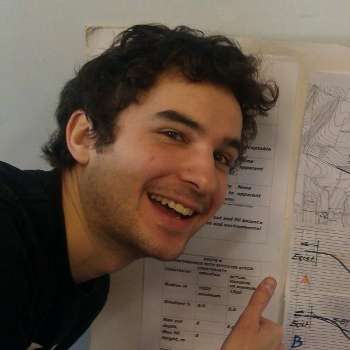Seasonal concert programmes come in all shapes and sizes. Reflecting the many sides of Christmas, they range from the commercial to the spiritual, from bombastic celebrity endorsement to the simplicity of choristers by candlelight. Florilegium’s concert at Kings Place was most appropriate for the restorative days that fall after the excitement of Christmas and before the Strauss of New Year’s. It gave a balanced, sober nod to seasonality and opened a new concert series which is set to extend well into December 2013; Bach Unwrapped. The series aims to “unwrap the eternal gift” of Bach’s music by employing performance, study days and participation, and it began with the brilliant cantata (for the third day of Christmas) Süsser Trost, mein Jesus kömmt.
Jesus comes sweetly and with comfort, the first aria explains, and so the majority of the cantata was performed with an understated, calm wash. Soprano Elin Manahan Thomas excelled in this regard, blending her voice with the warm timbre of the accompaniment. After the sudden jolt of the second subject, Manhan Thomas returned Florilegium to the easy contemplative style that they applied for much of this concert, allowing Bach’s harmonic sensitivities to make their own case. The second aria, although much more rangey and presumably a real test to perform, was given the same tone-matching treatment. Sally Bruce-Payne reached down toward the lower end of the mezzo register with ease and delivered long, exposed intervals with confidence. The oboe’s countermelody was sensitive to Bruce-Payne’s efforts throughout this aria, but I felt it could have been given a little more emphasis and expressiveness at times. On the whole, though, the approach of the instrumentalists was well placed to give prominence to the text, and the very real talent of the singers.
In the second of the concert’s two cantatas, the ensemble grew to include brass and percussion. Since Florilegium are a period-instrument ensemble, the volume never quite swelled to Sturm und Drang levels, but the instrumentation gave a relatively fierce representation of “the ends of the earth”; text that stands out in the cantata (for New Year’s Day) Gott, wie dein Name, so ist auch dein Ruhm, for being atemporal within a festival of time. The continuo also played out their parts with added weight, underpinning the coro nicely and filling Hall One with a brilliant, positive sound. Tenor Nicholas Mulroy (replacing James Oxley) stood out in this short SATB section for his fearless entry, and continued to impress in the aria that followed. Mulroy met the long passages of ascending thirds with great stamina and a bright enthusiastic delivery, which at every opportunity emphasised the text with supreme diction and explosive consonants. The text of the succeeding aria is a clever riff on words and the power of their utterance, and Manahan Thomas appeared to reflect that with a calm emphasis of the key phrases, drawing an innocence from “laughs his name” with a light touch, and quickly switching to a sustained gravity for “my final word”.
As well as the cantatas, two instrumental pieces were played which tastefully offset the powerful religiosity, and gave the audience a break from reading translated German. The Oboe d’Amore Concerto in A major is more familiar than at first glance, as it is the assumed original form of the better known Harpsichord Concerto in A major. It is wonderful to hear the oboe d’amore played well, and the piece is full of seductive lines that were nicely characterised by Alexandra Bellamy. Her treatment of the Allegro was somewhat heavy, and would have benefited from increased flexibility and brevity, but the Larghetto was a beautiful rendering of a moving melody and was well pitched by the accompaniment.
Since the Partita in A minor was played without accompaniment, flautist Ashley Solomon was given license to indulge the audience by approaching each movement with unique tempo and an arresting mood: Each of the Allemande’s phrases sagged in their beginning and end to bury the melody in sentiment; the Corrente was taken at such a pace that the fast fingerwork of the straight passages contrasted very clearly with the jaunty sections that interrupt them; and during the Sarabande that followed we were invited to inspect the unusual warmth of the period flute as it poured over the slow and slightly weepy tune.
The performance of Bach during this concert varied from the definite persuasion of Solomon’s flute partita, to the simple beauty of the almost unadorned opening aria. Florilegium and their guests have shown that some of Bach’s output greatly benefits from “unwrapping”, while some of it can be played simply (that is not to say easily), allowing the dots to speak for themselves within the context of a balanced and sensitive performance. The concert’s festivity was refreshing in its unfamiliarity, and it has successfully commenced a series which will grapple with nearly the full breadth of Bach over the year to come.


